
Easy seeds for beginners
Growing seeds can be a great way to understand the whole process of a baby plant growing into something you can call “homegrown”. It can be incredibly satisfying and at the end when you harvest those herbs or see your flowers in full bloom, the sense of fulfilment is the best! Here are some great easy seeds you can plant and be sure for success!
-
Basil:
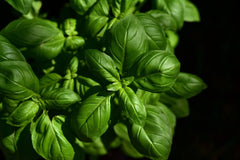
Italian genes eve basil aka Sweet basil is an annual herb that grows as an attractive bushy, upright plant with broad, smooth, shiny green leaves. Its seedling takes 5-10 days to germinate and it grows up to 2 feet. Basil prefers well-drained loamy soil rich in organic matter. Keep soil evenly moist. Basil is extremely sensitive to frost, so wait to transplant to the garden until all danger of cold weather is past.
Start the seed indoors. Cover the seed with a centimetre of the layer of soil and keep it warm and moist. Transplant when the seedlings are around 6 to 7 inches tall. Harvesting the early leaves is necessary as they have most of the flavour.
-
Oregano:
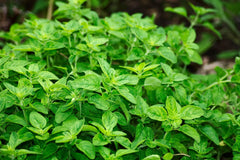
Oregano is a hardy perennial plant that is very easy to grow and very useful in elevating your everyday dishes. Oregano is used in Italian food as it adds a rich flavour to your pizzas or soups or steaks etc.
They take 7-14 days to germinate and grows up to 2 feet. Oregano prefers a loamy soil that drains well. Water occasionally until plants become established after transplanting.
Sprinkle a few small seeds on the soil and mist lightly. Oregano seeds require some light to germinate so do not cover seeds. Keep surface moist by frequently misting the soil.
Once the plant reaches 6 inches start snipping leaves and stems as needed throughout the growing season. Clipping stems will allow the plant to bush out. Harvest before the plant blooms for the strongest flavour.
-
Parsley:
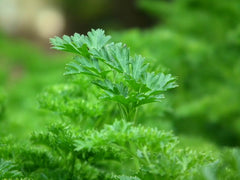
Parsley is a biennial herb. It has a fresh flavour that complements and doesn’t overpower other flavours in a dish. It pairs well with soups, meat, salads.
Parsley seedlings take 14-28 days to germinate and they grow up to 1 foot. Parsley prefers well-drained loamy soil rich in organic matter.
Water the baby plants regularly until they are fully-grown. Do not allow the plants to dry out completely as it will be difficult for them to germinate. 6- 8 weeks before the last frost date, start your seeds indoors.
You will have to have patience as they take time to sprout. Snip the stems from the base of the plant and trim off leaves as needed. You can freeze the stalks and use them in making broths to add a subtle earthy flavour.
-
Coriander:

Coriander is a cool-season annual herb that grows and matures quickly. The leaves are called cilantro, and the seeds are called coriander. Coriander pairs well with Mexican, Asian, and Indian foods.
Coriander seedlings take 10-15 days to germinate and grow up to 1- 2 feet. Cilantro prefers well-drained loamy soil rich in organic matter. Water young plants frequently until mature. Do not allow the plants to dry out completely or they will go to seed prematurely.
Cilantro doesn't like transporting. It's advisable to directly sow the seeds outdoors. Cover the seed with half an inch layer of soil and keep it moist. Cilantro likes to grow in cooler spring and fall seasons and will mature within 4 weeks or earlier if it gets warmer. Cilantro frequently self-sows’.
Allow seeds to mature for Coriander and let a few seeds drop for new plants.
Once the plant is 6 inches high, snip fresh leaves from the outer edges allowing the centre of the plant to continue to produce. After cilantro flowers, coriander seeds can be harvested when allowed to dry and turn brown. Store the coriander seeds whole, in an airtight container. Crush the seeds when ready to use to release its flavours.
-
Marigold:
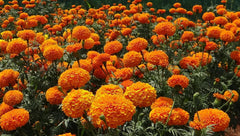
Marigold or Tagetes erecta is one of the easiest and most beautiful annual plants to grow. They range from pale yellow to deep orange and these warm hues are a great addition to your garden. Marigolds are not fussy and will tolerate most conditions. Give them rich, well-drained soil and plenty of sunshine, these plants will thrive.
They take 50-60 days for germination and it grows up to 1 foot. Sow marigold seed directly in the ground and cover with a thin layer of soil. Water thoroughly.
Marigolds can also be started early indoors under grow lights before transplanting outdoors about six to eight weeks before the last frost date. Once matured and healthy, marigolds will continue growing easily, even if you don’t pay attention. Water to keep the soil slightly moist but not soggy.
-
Sunflower:
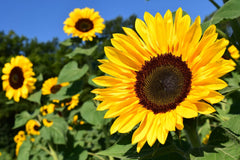
Another beautiful and easy annual plant to grow. The sunflower is tall and has big daisy-like flowers of bright yellow petals and brown centres that ripen into heavy heads filled with seeds. It’s best to sow sunflower seeds directly into the soil after the danger of cold is past.
Give plants plenty of space, especially for low-growing varieties that will branch out. Make rows about 30 inches apart.
Plant the large seeds no more than 1 inch deep and 6 inches apart. Plant them after the soil has been thoroughly warmed, from mid-April to late May.
You can plant many seeds and thin them out by keeping the strongest contenders when the plants are six inches tall.
Plant different bathes staggered over 5 to 6 weeks to keep enjoying continuous blooms. If you see birds pecking around for the seeds, spread netting over the planted area until seeds germinate.
-
Zinnia:

Zinnia flowers are a colourful and long-lasting addition to the flower garden. Growing zinnia plants can be inexpensive, especially when growing them right from seed. Seeds of zinnia flowers should usually be sown directly into the bigger pots, as the roots do not like to be disturbed.
If you wish to start growing zinnia plants from seeds indoors, plant the seeds in pots made of biodegradable material that can be planted directly into the garden later.
Zinnias begin to show growth outdoors when temperatures are above 10° C. Zinnia care is very easy, it includes watering at only the base of the plant.
A soaker hose is good for keeping foliage and petals dry while giving the base the water it needs.
Watering in the early morning is also beneficial for the plant. It allows the foliage and flowers ample time to dry off before nightfall.
Keep the soil moist and not soggy is important. Mature zinnias require less watering, as grown flowers are somewhat drought tolerant.
Until next time,
Have a lovely day and Happy Planting!!
Gayatri Vaidya©


Comments
Leave a comment